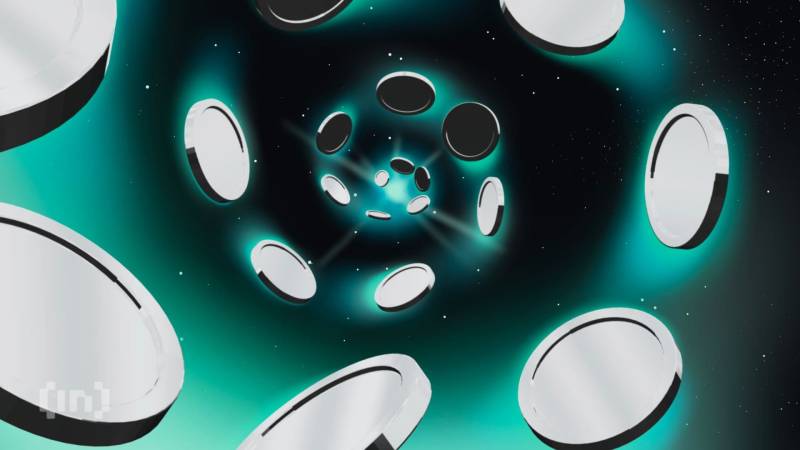 |
|
 |
|
 |
|
 |
|
 |
|
 |
|
 |
|
 |
|
 |
|
 |
|
 |
|
 |
|
 |
|
 |
|
 |
|
The Lightning Network, a second layer for BTC, scales the blockchain's capacity and manages transactions more effectively and affordably

Lightning Network is a Bitcoin blockchain layer-2 solution. Blockchain scalability is mostly dependent on layer-2 solutions. Since Lightning Network is related to Bitcoin (BTC) and can add utility value to the chain, it is one of the most important layer-2 solutions.
Table of Contents
What is the Lightning Network?The Lightning Network, a second layer for BTC, scales the blockchain’s capacity and manages transactions more effectively and affordably by utilizing micropayment channels. It is a technology solution that introduces off-chain transactions to address issues with BTC. A transaction mechanism that allows both parties to send and receive money is called its channel.
There is no official Lightning Network token as the platform uses BTC as its native currency.
Is Lightning Network free?
No. Users incur fees for initiating a channel with a routing node in addition to the usual on-chain transaction. The routing node operator provides the Lightning channel to the main network for a price. The operator decides on the base fee and the rate, which make up fees.
What does the Lightning Network do?
Initially, BTC was designed to be a decentralized payment system that users could access from anywhere and be anonymous. It gained so much traction that the blockchain was unable to manage the volume of transactions.
The Lightning Network has been in development since its initial proposal by Joseph Poon and Thaddeus Dryja in 2016. BTC’s poor transaction time, throughput, and expenses were the issues that the Lightning Network was designed to address.
Developers built BTC layers to combat sluggish transaction speeds and excessive energy use. The core blockchain is the initial stratum. The secondary layer, which is “on top of” the primary one, adds functionality to the one beneath it. Other types of off-chain transactions involving cryptocurrency exchanges can also be handled via the Lightning Network.
How do payments work on the Lightning Network?
Quick micropayments are made possible by the Lightning Network. Compared to the Lightning Network, BTC has a minimum transaction output that is more than 100 times larger. Achieving this use case is crucial for the chain’s usability since fast micropayments are the way of the future for Web3 applications like gaming.
The Lightning Network enables fast micropayments, but they are only feasible if they can be carried out at extremely low transaction costs. The blockchain frequently loses market share to its rivals as a result of inefficient transaction processing and Lightning Network makes sure this doesn’t happen.
X users can utilize the Lightning Network to send and accept Lightning payments in the form of BTC “tips.” Many of X’s 360 million monthly active users may transfer BTC payments to other Twitter accounts immediately and for free using Strike, a payments tool that works with the Lightning Network.
What problems does Lightning Network aim to solve?
The Lightning Network aims to address the following problems:
Users can communicate many transactions to one another without waiting for the slower main net to confirm individual exchanges by opening channels on the Lightning Network.
Parties may transfer money amongst themselves as necessary between a channel’s opening and closing. The transactions are sent to the main net for verification after the channel is closed.
Should I use Bitcoin or Lightning Network?
BTC can be used as a mode of storage and doing transactions on-chain which can be slow and expensive. Alternatively, since there is no separate Lightning Network token, and users can use BTC for transacting BTC with low fees, faster speeds, and making online purchases that require instant settlements.
How do you pay on the Lightning Network?
There isn’t any official Lightning Network app, however, several platforms give the opportunity for users to interact with the Lightning Network. Some of the most commonly used ‘unofficial’ Lightning Network apps include Muun and Wallet of Satoshi.
Is Lightning Network anonymous?
It is possible to track transactions on the BTC blockchain from one wallet to another. Since only the opening and shutting of channels are reported to the chain when using the Lightning Network, the majority of micropayments will be practically impossible to track down.
What is the risk of using the Lightning Network?
By having more open links with other companies, companies who invest in Lightning Network nodes may end up becoming similar hubs or centralized nodes in the network. Price volatility, fees, hacking, and fraud are further issues.
Disclaimer:info@kdj.com
The information provided is not trading advice. kdj.com does not assume any responsibility for any investments made based on the information provided in this article. Cryptocurrencies are highly volatile and it is highly recommended that you invest with caution after thorough research!
If you believe that the content used on this website infringes your copyright, please contact us immediately (info@kdj.com) and we will delete it promptly.
-

-

- This collaboration aims to streamline cross-border remittances, offering faster and more cost-effective transactions using blockchain technology.
- Mar 28, 2025 at 09:10 am
- Chipper Cash will integrate Ripple Payments into its platform, leveraging the efficiency of blockchain to facilitate seamless international money transfers.
-

-

-

-

-

- Pre-mining SuperNode distribution raises questions about Pi Network's decentralization promises
- Mar 28, 2025 at 08:55 am
- An account claiming to represent the team responded, but the answer was criticized for being vague, explaining only the technical role of supernodes without detailing how users could operate them.
-

-
























































